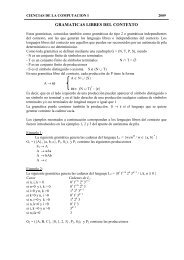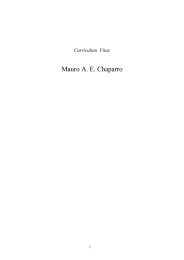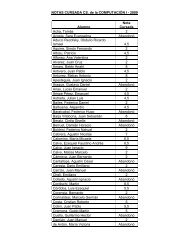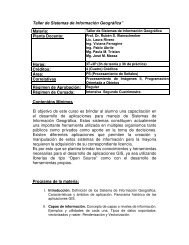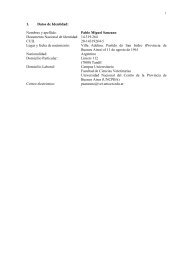Libro de Resúmenes / Book of Abstracts (Español/English)
Libro de Resúmenes / Book of Abstracts (Español/English)
Libro de Resúmenes / Book of Abstracts (Español/English)
You also want an ePaper? Increase the reach of your titles
YUMPU automatically turns print PDFs into web optimized ePapers that Google loves.
Resumenes 101<br />
bloqueados. El nudo que <strong>de</strong>be ser sometido a bloqueo se elige<br />
aleatoriamente. Para ello se emplean números aleatorios obtenidos con el<br />
Método <strong>de</strong> Montecarlo para <strong>de</strong>terminar las coor<strong>de</strong>nadas <strong>de</strong> todos los nudos<br />
y luego mediante un sorteo se elige el nudo que <strong>de</strong>be ser bloqueado.<br />
También se ha implementado un programa <strong>de</strong> simulación computacional<br />
usando LabView.<br />
En el segundo experimento, se realizó un montaje que consta <strong>de</strong> un<br />
grupo <strong>de</strong> mil esferas metálicas y mil esferas dieléctricas, las esferas fueron<br />
ubicadas en un recipiente <strong>de</strong> manera aleatoria don<strong>de</strong> a medida que ingresen<br />
las esferas a este se estará midiendo el nivel <strong>de</strong> percolación, es <strong>de</strong>cir, el<br />
punto mínimo don<strong>de</strong> se pue<strong>de</strong> establecer un camino <strong>de</strong> conducción <strong>de</strong><br />
manera aleatoria. El nivel <strong>de</strong> percolación es igual al número <strong>de</strong> esferas<br />
conductoras dividido entre el número total <strong>de</strong> esferas. Cuando se tomaron<br />
mayor número <strong>de</strong> esferas, se obtuvo el nivel <strong>de</strong> percolación más cerca <strong>de</strong>l<br />
valor teórico. Según el mo<strong>de</strong>lo <strong>de</strong> autoorganización <strong>de</strong> las macromoléculas,<br />
esta es posible si el sistema molecular abiogénico posee metabolismo, autoreproducción<br />
y mutabilidad. El metabolismo significa que el sistema es<br />
abierto y en él ocurre la polimerización y <strong>de</strong>scomposición <strong>de</strong> los polímeros.<br />
Ya que el sistema está lejos <strong>de</strong>l equilibrio, estos dos procesos no están<br />
ligados por la condición <strong>de</strong> la reversibilidad microscópica. Para el<br />
mantenimiento <strong>de</strong>l metabolismo es necesaria la afluencia <strong>de</strong> sustancias, que<br />
posea un exceso <strong>de</strong> energía libre. La auto-reproducción (copia matricial <strong>de</strong>l<br />
polímero) significa un proceso auto catalítico, lo que asegura la<br />
autoorganización. La muta-génesis es necesaria para la creación <strong>de</strong> la<br />
información nueva. En este experimento, se tuvo en cuenta que la principal<br />
diferencia entre un proceso biológico y un proceso inerte es el nivel <strong>de</strong><br />
fluctuaciones o inestabilida<strong>de</strong>s, <strong>de</strong>bido a que al aumentar la concentración<br />
<strong>de</strong> estas se está modificando el comportamiento futuro <strong>de</strong>l ser vivo<br />
(evolución).<br />
Qualitative prediction <strong>of</strong> the biologics processes<br />
using the percolation theory<br />
The word percolation means infiltration and to the theory that studies<br />
these phenomenon is named percolation theory, that studies the related<br />
with flows <strong>of</strong> fluids in a random media, e.g., molecules penetrating in a<br />
porous solid, or a fire consuming a forest or an epi<strong>de</strong>mic propagating in a<br />
population. The problems studied by this theory belong to the critical<br />
phenomenon, characterized by a critical point in which the properties <strong>of</strong> the<br />
system change abruptly. In this work a simulation is explained using the<br />
percolation theory and it appears that this one can be used in the study <strong>of</strong><br />
the biological evolutionary processes.<br />
Is used a mo<strong>de</strong>l <strong>of</strong> a fruit gar<strong>de</strong>n <strong>of</strong> big dimensions where the fruit<br />
trees are not closely together one <strong>of</strong> other one because it represents the<br />
rapid propagation <strong>of</strong> diseases, and neither <strong>of</strong> they are very far because it<br />
would turn out to be totally uneconomical, on having big portions <strong>of</strong> land<br />
without using . Are supposed that the trees are planted on the no<strong>de</strong>s <strong>of</strong><br />
certain grid drawing in the surface <strong>of</strong> the land. Many types exist <strong>of</strong> grids but<br />
the most common are: square, triangular and hexagonal. In the gar<strong>de</strong>n the<br />
following consi<strong>de</strong>rations are had: 1) The trees that are sick only can infect<br />
the most immediate. 2) There exists the probability <strong>of</strong> that the immediate



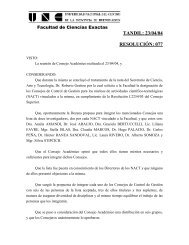
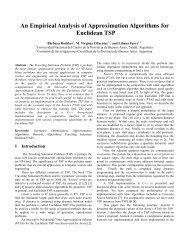
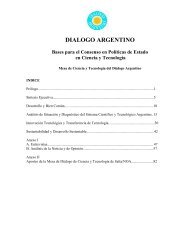
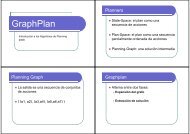

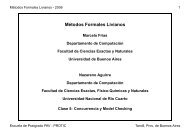
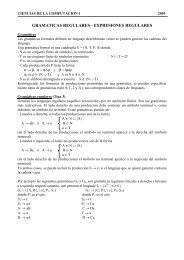

![Clase 13 [pdf]](https://img.yumpu.com/19616969/1/190x245/clase-13-pdf.jpg?quality=85)

